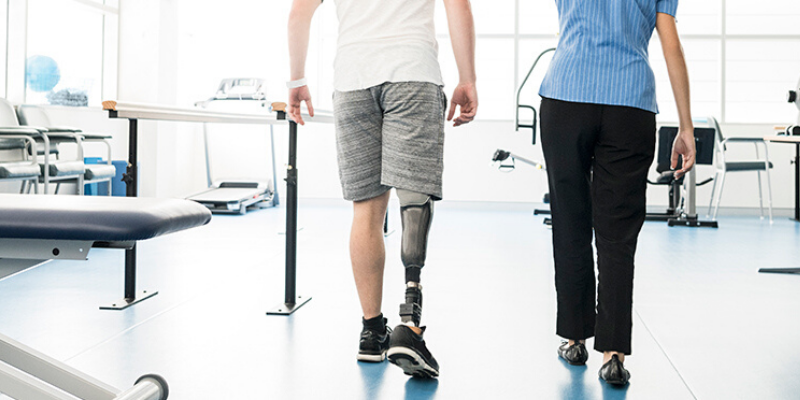Posted On: January 20, 2020 by BioAdvance Prosthetic Solutions in: Prosthesis Prosthetic

The technological advancement in the architecture of prosthetic legs is amazing. One hundred years ago, they could never imagine the intuitiveness or sleek look of prosthetics and would not have had the materials to make anything that worked well. They would resort to something as simple as a wooden table or chair leg. As you can imagine, they weren’t very comfortable or clean. Now there are many different kinds to choose from, based on the activity level one is seeking. To understand prosthetic legs, these are the four basic components you should know.
1. Socket
A socket is a device situated between the residual limb and the prosthesis. It’s highly specialized to an individual’s needs for comfort based on the structure of the residual limb. It’s very important that this fits perfectly to maximize comfort. Often, when getting fitted for a socket, you will first wear a clear socket in order to have a better picture of the fit.
It will also come with a liner that will make the socket more comfortable, just as a sock would for a shoe.
2. Limb
This is the main part of the prosthesis. There are two common types that are used for legs.
- Below the knee: When a lower prosthetic leg is attached to an intact upper leg.
- Above the knee: A lower and upper prosthetic leg with a knee.
The design of it will be dependent on each individual and their preferences.
3. Knees and Feet
Knees are only needed with the above the knee limbs (AK). There are a variety of knee options based upon preference. The two most basic kinds are called: single-axis and polycentric axis. The single-axis is designed so that the knee only bends backward and forward. Polycentric axis knees can move in multiple ways.
The feet are typically designed to be very light, to compensate for the heavier weight of the rest of the prosthesis. It should be small enough to fit in a shoe, but durable enough to keep up with each individual’s level of activity whether it’s walking, running, hiking or jumping.
4. Structural Components
The structural components of artificial legs are simpler than an upper limb. They have the advantage of gravity to do a lot of the natural motions. For those who desire more advanced structures, there are microprocessor-controlled ankles and knees. Adjustments are made frequently to ensure comfort and safety. For example, some may not like the vacuumed feeling in the socket and may prefer a belt or a strap to hold the prosthesis in place.
Our goal is to bring you comfort, security and continued independence. Contact BioAdvance today to learn more about our services.

0 comments